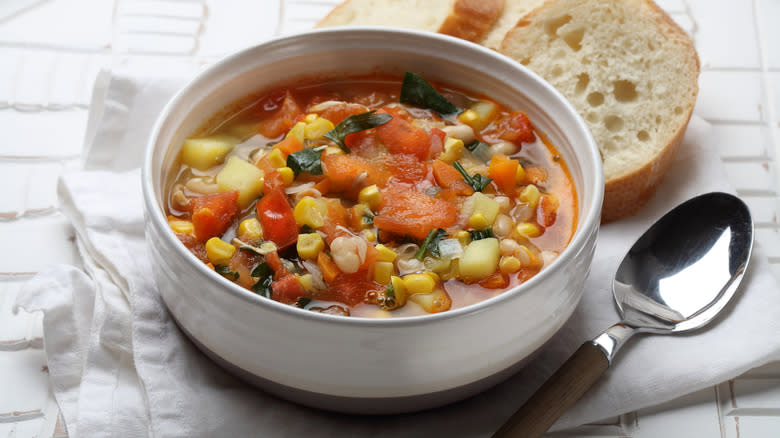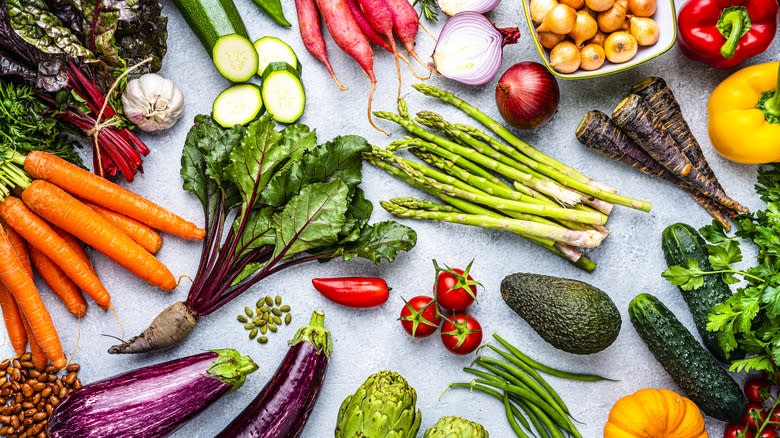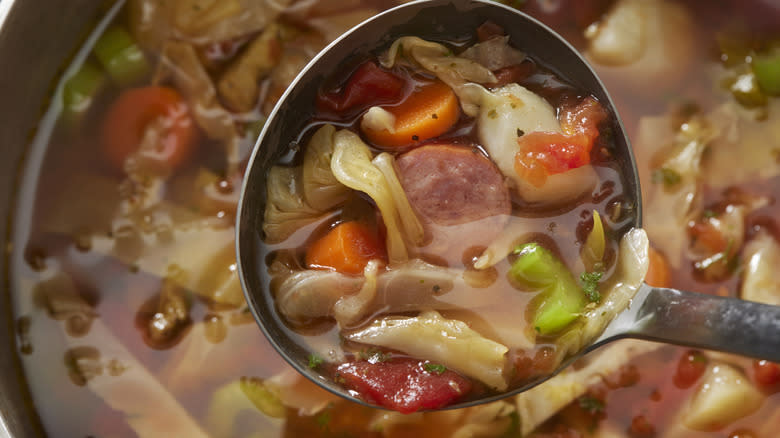Avoid Ruining Your Soup With These Vegetable Tips

Whether you're trying to sneak a few additional vegetables into your family's diet or you simply adore a spoonful of carrots and potatoes in a hot broth, soups are the perfect vessel for incorporating just about every kind of vegetable. However, common mistakes can lead to unevenly cooked veg, which is a recipe for ruining your soup. While your goal might be to simply tuck a bit of onion and some carrot into your creamy tomato-basil soup or you want to load up a pot with all the veggies in a vegetable soup, learning how to handle those prized garden ingredients can mean the difference between a miracle meal and mush.
To avoid an episode of Soup Nightmares, it's important to pay attention to the types of vegetables you're using, understand their individual cooking needs, and practice soup-making protocols that will net you a perfectly textured soup with vegetables in the starring role. Once you get that figured out, you'll be able to use up what's in the vegetable drawer in a comforting beef and vegetable or classic chicken noodle soup.
Read more: Canned Soups You Should And Shouldn't Buy
Get To Know Your Vegetables

Each vegetable you put into your soup has its own version of the perfect cooking time. Where a potato might require a 20-minute bath, tender spinach leaves should only dip for a few minutes. Although every ingredient is different, you can generalize by lumping together the types of vegetables you're cooking. For example, aromatics like garlic, onion, celery, and ginger should all be the first ingredients in the pot. This category also includes leeks, finely cut carrots, bell peppers, and jalapeños.
While the aromatic vegetables are often sautéed with herbs in fat to give the soup its base flavors, root and other hearty vegetables are added once the broth is developed. This allows them to boil, imparting flavors into the stock and absorbing flavors at the same time. Squash, potatoes, sweet potatoes, turnips, rutabaga, beets, and cabbage all take a bit of time to cook through and mellow any sharp flavors. Nearer to the end of the cooking time, you'll add quicker-cooking vegetables such as bite-sized carrots, celery, peas, asparagus, and small broccoli or cauliflower florets. Staggering the addition of these ingredients means they will all be cooked to their ideal tenderness at the same time without overcooking in your soup.
Other Veggie Tips

Even if your vegetables are in the same category as each other (i.e. three kinds of root vegetables), if you don't cut them consistently, it will lead to unevenly cooked bites. Cubed, diced, minced, or sliced -- all veggies going into the pot at the same time should be roughly the same size. Thus far, we've assumed you're cooking with fresh vegetables. However, if you're using frozen or canned vegetables, the timelines will change. While frozen broccoli will need to cook for a few minutes, canned corn just needs to warm through. The key is to estimate the cooking time for each ingredient and then stagger their addition accordingly.
The cooking method you choose can also wreak havoc on your vegetables and the end result of your soup. If you're using a pot on the stove, keep an eye on it to maintain a simmer rather than a more aggressive boil. This is to cook the vegetables through without damaging them from a rough tumble. Similarly, if your soup is in the slow cooker or oven, check it occasionally to make sure your vegetables aren't getting mushy. With a bit of monitoring and attention to time-release additions of your vegetables, your soup and your palate will thank you.
Read the original article on Daily Meal

